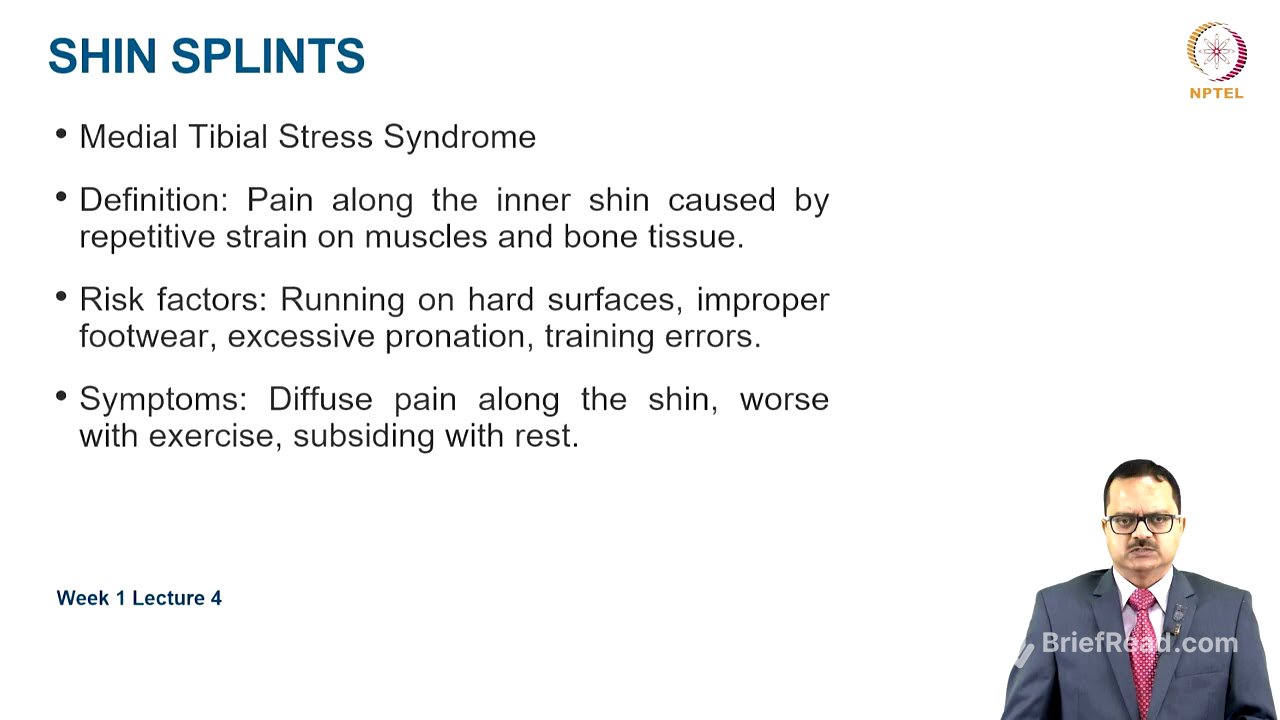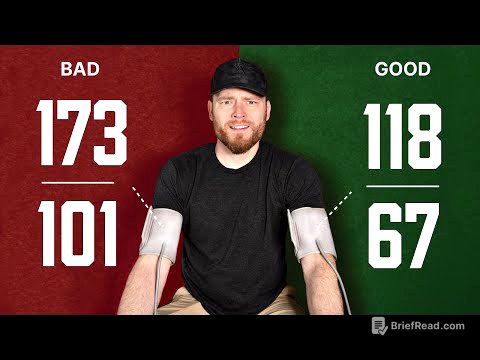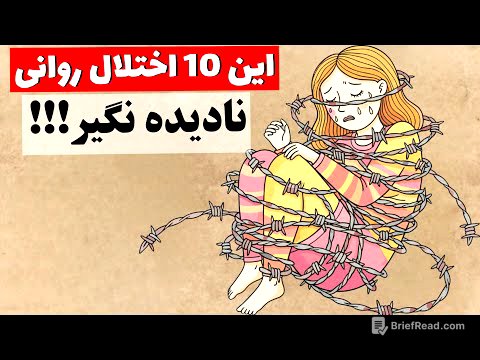TLDR;
This lecture provides a comprehensive overview of overuse injuries in athletes, including their causes, common types, management, and prevention. It covers tendinopathies, stress fractures, shin splints, bursitis, and cartilage damage, emphasizing the importance of load management, rehabilitation, and proper recovery protocols. The lecture also discusses the role of imaging, physical medicine, biomechanics, and nutrition in managing these injuries, and highlights future trends in treatment and prevention.
- Overuse injuries result from repetitive microtrauma without adequate recovery.
- Management includes load management, rehabilitation, and prevention strategies.
- Future trends involve regenerative medicine, wearable technology, and AI-driven rehab.
Introduction to Overuse Injuries [0:15]
Overuse injuries are caused by repetitive microtrauma without sufficient recovery time, leading to tissue breakdown in bones, tendons, ligaments, and muscles. These injuries constitute a significant portion of sports-related injuries and can become chronic if not properly managed. Effective management involves load management, rehabilitation, prevention strategies, and adherence to proper recovery protocols.
Common Overuse Injuries [0:43]
Common overuse injuries in athletes include tendinopathies (such as Achilles, patellar, and rotator cuff tendinopathy), stress fractures (affecting the tibia, metatarsals, femur, and lumbar spine), muscle overuse symptoms (like shin splints, compartment syndrome, and iliotibial band syndrome), bursitis (including trochanteric, subacromial, and prepatellar bursitis), and cartilage damage (leading to conditions like chondromalacia patella and osteochondritis dissecans). Lumbar spine stress fractures are frequently observed in fast bowlers in cricket.
Pathophysiology and Risk Factors [3:42]
The pathophysiology of overuse injuries involves tissue breakdown due to repetitive mechanical stress without adequate recovery, leading to chronic inflammation and tissue degeneration rather than healing. Risk factors include training errors, biomechanical abnormalities, inadequate nutrition, and improper footwear.
Tendinopathies: Types, Symptoms, and Management [4:15]
Tendinopathies are chronic tendon degeneration resulting from excessive repetitive loading, commonly affecting the Achilles tendon, patella tendon, and rotator cuff. This can lead to conditions like runner's ankle, jumper's knee, and swimmer's or thrower's shoulder. Symptoms include pain, stiffness, swelling, and decreased strength, with pain worsening during activity. Management involves activity modification to reduce repetitive stress, exercise therapy with progressive eccentric strengthening, modalities like shockwave, dry needling, and local ultrasound, and medications such as NSAIDs and corticosteroid injections for pain relief and inflammation reduction.
Stress Fractures: Causes, Symptoms, and Management [5:38]
Stress fractures are small cracks in bone caused by repetitive impact and insufficient recovery time, commonly occurring in the tibia, metatarsals, femur, and lumbar spine. Symptoms include a gradual onset of localized pain, tenderness, and increasing pain with activity. Management includes immediate rest to avoid impact activities, gradual return to load-bearing activities, nutritional support with calcium, vitamin D, and improved caloric intake, and the use of orthotics for structural abnormalities.
Shin Splints: Causes, Symptoms, and Management [6:46]
Shin splints, or medial tibial stress syndrome, are common in runners and military recruits, characterized by pain along the inner shin due to repetitive strain on muscle and bone tissue. Risk factors include running on hard surfaces, improper footwear, excessive pronation, and training errors. Symptoms include diffuse pain along the shin that worsens with exercise and subsides with rest. Management involves rest and ice for initial pain relief, strengthening exercises for calf and shin muscles, biomechanical corrections with orthotics, and a gradual return to running with controlled training loads.
Compartment Syndrome: Types, Symptoms, and Management [8:01]
Compartment syndrome involves increased pressure in muscle compartments during activity, causing pain and neurovascular compromise. Chronic exertional compartment syndrome is common in runners and cyclists due to repetitive leg movements. Symptoms include tightness, aching pain, numbness, and weakness, which subside with rest. Management is initially non-surgical, involving activity modification, stretching, and myofascial release techniques. If symptoms persist or the condition becomes severe, fasciotomy may be necessary.
Bursitis: Causes, Symptoms, and Treatment [9:16]
Bursitis is the inflammation of the bursa due to repetitive friction or compression, commonly affecting the shoulder, knee, and hip. Symptoms include localized swelling, tenderness, and reduced range of motion. Treatment includes rest and ice to reduce inflammation, anti-inflammatory medication, stretching and strengthening exercises to reduce mechanical stress, and local injections of corticosteroids, PRP, or stem cells.
Chondromalacia Patella: Causes, Symptoms, and Management [10:11]
Chondromalacia patella involves the softening and breakdown of patellar cartilage due to repetitive stress, commonly seen in young athletes, particularly runners and cyclists. Symptoms include anterior knee pain, crepitus, and pain that worsens with prolonged sitting or squatting. Management includes quadriceps strengthening (emphasizing the vastus medialis oblique muscle), patellar taping or bracing to improve patellar tracking, and avoiding aggravating activities like deep squats and repetitive knee flexion.
Role of Imaging in Overuse Injuries [11:08]
Imaging plays a definitive role in diagnosing overuse injuries. X-rays can detect stress fractures, while MRI is ideal for detecting soft tissue and bone marrow edema, often identifying these injuries at an early stage. Musculoskeletal ultrasound allows for real-time tendon assessment and dynamic evaluations. Bone scans may be used in doubtful cases.
Role of Physical Medicine and Rehab [11:50]
Physical medicine and rehabilitation (PMR) specialists use modalities to reduce pain and inflammation and promote healing. Manual therapy is used for pain relief and restoring mobility. Neuromuscular retraining improves movement patterns. Progressive loading programs tailored to the individual are prescribed and adhered to during rehabilitation. Drug therapy may be used in specific instances during treatment and rehab.
Biomechanical Assessment and Correction [12:46]
Biomechanical assessment and correction are crucial in managing overuse injuries. Biomechanics is used for analyzing gait and running to identify improper movement patterns. Orthotics may be prescribed for foot abnormalities causing excessive stress. Postural correction techniques can reduce unnecessary strain on specific body regions.
Nutrition and Recovery Strategies [13:29]
Adequate protein intake is essential for tissue repair and recovery. Calcium, vitamin D, B12, magnesium, and zinc are crucial for maintaining bone health. Hydration and electrolyte balance are vital in injury prevention and during the rehabilitation process.
Return to Play Criteria [14:04]
Return to play criteria include pain-free functional movement with a full range of motion, strength and conditioning testing to ensure readiness, and psychological readiness for competition.
Case Studies [14:22]
Case study 1: A runner with Achilles tendinopathy was treated with load management, biomechanical correction, and eccentric muscle strengthening, resulting in a successful return to training with modified load progression.
Case study 2: A basketball player with a lower limb stress fracture was treated with activity modification, bone strengthening nutrition, and progressive rehabilitation, leading to a full recovery with an adjusted training program.
Prevention Strategies [15:28]
Prevention strategies include prescribing age-appropriate training programs, ensuring proper design and implementation of training programs, gradual progression in training loads, cross-training to reduce repetitive stress, and regular mobility and strength work to ensure resilience.
Future Trends in Overuse Injury Management [16:10]
Future trends in overuse injury management include advances in regenerative medicine with PRP and stem cells for tendon healing, wearable technology for monitoring training loads and injury risk, and artificial intelligence programs for personalized treatment.
Take-Home Message [16:42]
Overuse injuries are caused by repetitive microtrauma without adequate recovery. Common injuries include tendinopathies, stress fractures, shin splints, bursitis, and cartilage damage. Chronic mechanical stress leads to tissue breakdown and inflammation. Management typically involves activity modification, exercise therapy, adjunct treatments, and nutrition and recovery strategies. Prevention is achieved through gradual training progression, cross-training, and biomechanical corrections. Future trends include regenerative medicine, wearable tech, and AI-driven rehab for preventing overuse injuries.









